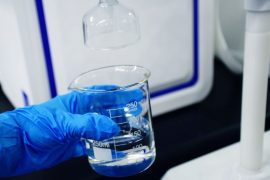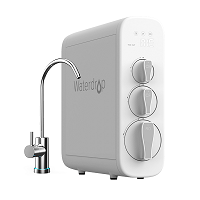It can be extremely disheartening to begin learning about the contaminants commonly present within our polluted water systems. These contaminants pose significant risks to your overall health, the health of loved ones, and even your pets. Although there are a variety of dangerous contaminants, Chromium 6 has recently begun to gain attention on a grand scale. Why is a single contaminant gaining ground?
Contaminating at an Alarming Rate
Chromium 6 is beginning to contaminate water ways at an alarming rate compared to the contamination rate of other contaminants. When this particular contaminants is consumed over a long period of time, the harmful consequences are more dire than that of others. As such, more time and effort are being put into the research surrounding the occurrence and the impact on overall health.
Whether we choose to ignore the facts surrounding this contaminant, or decide to educate ourselves on the applicable health risks, Chromium 6 is here to stay. Although you may not personally experience the health problems associated with the consumption of this element, the fact remains: Chromium 6 is dangerous to human life. We all deserve access to safe and reliable water sources, free from the risk of dangerous contaminants. As such, let’s delve a little deeper into the history of chromium, how it impacts your day-to-day activities, and what you can do to avoid it.
The History of Chromium
Chromium 6 is a naturally occurring chemical known to cause cancer. It is also the by-product of industrial efforts, which tend to produce high concentrations of the contaminant. This type of pollution is produced when any given industrial site fails to properly dispose of waste, including unlined coal ash ponds, and more. The side effects of even small amounts of chromium 6 exposure leads to complications such as stomach cancer, pneumonia, skin burns, and difficulty during childbirth.
Like many women following her, a California woman known as Erin Brockovich made it her personal mission in the 90s to put an end to the contaminated drinking water of her local area. Through endless research, Erin discovered the shocking truth behind the contamination of Chromium 6 to her local water ways, thanks to the Pacific Gas and Electric Company. Her work gained so much attention, a movie was made in her honor. The film “Erin Brockovich” provides a look into the discovery of a 30 year contamination poisoning on the town called Hinkley due to the mismanagement of the electric company. Citizens suffered from liver damage, complications to their reproductive health, cancer, and even developmental delays.
Unfortunately, despite the heaps of evidence proving the dangers surrounding chromium 6, the United States EPA (Environmental Protection Agency) has refused to set any legal limits for chromium 6 levels in tap water. Data was analyzed by the Environmental Working Group through the use of water tests from around the country in order to assess the levels of contaminants present in US drinking water sources. These tests demonstrated that contaminants, such as Chromium 6, were lurking within the water supply of more than 200 million Americans across the nation. Essentially, this means that households within 50 states of the US are utilizing and consuming tap water contaminated with dangerous elements including Chromium 6.
The Highest Levels of Chromium 6 Contamination
More than 1,370 United States county water supplies featured chromium 6 levels far beyond California’s benchmark along, thanks to an analysis conducted by the EWG. Their interactive map shows exactly where these counties are located, but include Arizona, California, Arizona, and more. The highest averages were found within the area of Phoenix, with St. Louis, Houston, and others close behind.
As time ticks on, and citizens continue to pay the consequences of this widely ignored contaminant, the EPA has conducted comprehensive health reviews beginning back in 2010. This was when the first tests for Chromium 6 were conducted on a national level, solely in response to a report from the EWG. Associates claim the halt on creating Chromium 6 federal regulations is due to the difficulty surrounding testing for toxicity, with very few citizens having had proper experience with the element.
A spokesperson for the EPA wrote an emailed statement on behalf of the agency, in regard to the assessment of Chromium 6’s health risk, with future plans to publish and release findings within the next year. Currently, only 2% of the water systems tested by the EPA exceeded that of California’s water standard (10 PPB). Supposedly, this is far lower than 75% of systems around the country, with levels higher than 0.02 PPB.
Enjoy Water Free From Chromium 6
The aid of a home water filtration system provides peace of mind to the health of you and your family. This means you can cook with water, drink daily water, and serve water to others within your home free from the worry of contaminants and risky consequences. Running out to your local grocery store for a filtration system isn’t enough, though. In order to protect your loved ones from the dangers of deadly contaminants, you must identify a home filtration system backed by NSF certifications.
The NSF International organization was developed to set standards in regard to public health, providing certification programs in an effort to protect water worldwide. These certifications may be found displayed upon a variety of water filtration products but, unless it is from the NSF itself, it may not be worth your investment. The NSF ensures each product passes rigorous testing, including full-system contaminant reduction, extraction testing, and even structural integrity.
Because local water systems are not required to monitor the levels of Chromium 6 present in your tap water, it’s up to you to protect your household from its risky health effects. Whether you prefer to take steps toward testing for this contaminant yourself, or just want to safeguard your personal health from Chromium 6, you are solely responsible for any action taken against its consumption.
Waterdrop G3 Reverse Osmosis
When it comes to keeping those around you safe and healthy, providing reliable drinking water is a great way to get started. In fact, the undersink reverse osmosis filter produced by Waterdrop is sufficiently tested and certified according to NSF/ANSI standard 58, and touts a TDS reduction rate of up to 94%. This RO system is also tested and certified according to NSF/ANSI standard 372, proving the use of lead-free materials for the safest product possible.

